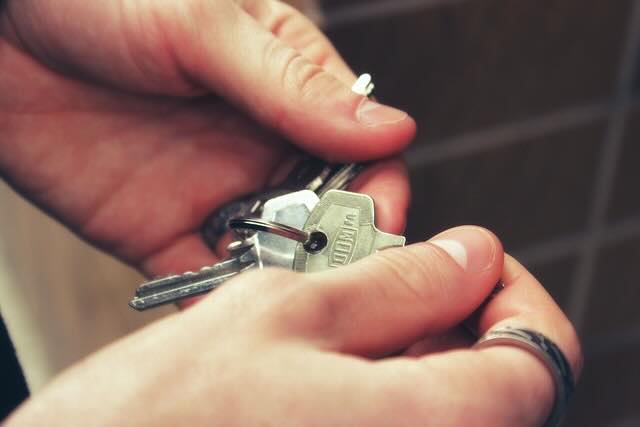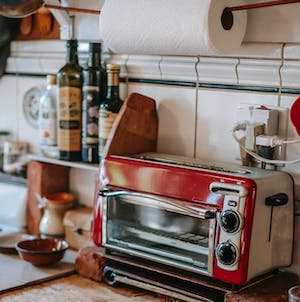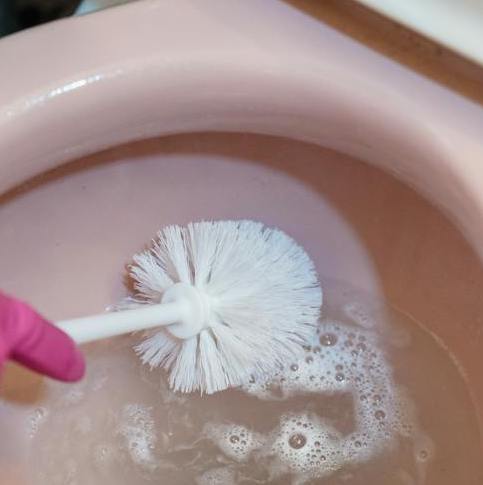Living in a shared space can come with its unique set of challenges. One such situation that many of us may have faced or heard about is – ‘my roommate doesn’t flush the toilet each time’.
While it may seem like a trivial matter to some, it has much deeper implications than one might think. From understanding the psychology behind this habit to exploring its health, economic, and ecological aspects, this article delves into various facets of the ‘non-flush’ phenomenon. Moreover, it offers fun and lighthearted ways to address the issue, keeping harmony in shared living spaces.
So, let’s flush away the awkwardness and dive right into the topic!

Table of Contents
Why is it important to address the issue of a roommate not flushing the toilet?
Addressing the issue is vital for maintaining hygiene, ensuring health safety, managing economic costs, and fostering a harmonious living environment. Unflushed toilets can be breeding grounds for bacteria and can lead to unpleasant odors, making the shared space less comfortable for everyone.
Understanding the Non-Flush Phenomenon
The psychology behind flushing or not
Toilet flushing might appear to be a straightforward habit for most, but it’s important to remember that habits and behaviors are often deeply rooted in our psychology. Not flushing the toilet might stem from a variety of reasons, some of which can be traced back to psychological factors.
One such aspect can be ‘action rationalization.’ It is a phenomenon where a person rationalizes their behavior even if it’s against societal norms or expectations. For instance, a roommate might rationalize not flushing by saying, “Why should I flush when I’m just going to use it again soon?” or “It’s only pee; it’s not that dirty.”
There can also be a lack of awareness or education about the importance of hygiene, cleanliness, and the social etiquette of shared living spaces. This may be particularly true for individuals who’ve had their own private bathrooms all their lives or who’ve grown up in environments where flushing wasn’t emphasized.
Environmental considerations and saving water
It’s no secret that our planet’s resources are dwindling, and water is no exception. Conscious water conservation is increasingly becoming a priority for many. The ‘if it’s yellow, let it mellow’ motto is often used by those trying to save water. This philosophy proposes that if the waste is liquid (urine), it’s not necessary to flush each time, thus saving water.
While the intention behind this approach is commendable, it’s crucial to understand that this strategy may not be as effective as it seems, especially in shared living spaces where hygiene and comfort are a shared responsibility. An open discussion about such environmental considerations is essential to ensure everyone’s needs and concerns are addressed.
The ‘forgetful flusher’ syndrome
The human mind is complex, and with our busy lives and countless responsibilities, forgetting to flush the toilet can sometimes simply be an oversight. In psychological terms, this can be attributed to the ‘Zeigarnik effect,’ which states that people remember uncompleted or interrupted tasks better than completed tasks.
Health Implications of Not Flashing
Bacterial playground: the lurking dangers
Toilets, especially when not flushed, can harbor a variety of bacteria and pathogens. Microorganisms such as E.coli, Streptococcus, and S. aureus are commonly found in unflushed toilets. These pathogens, if they come in contact with humans, can cause diseases ranging from minor infections to serious illnesses.
In fact, the U.S. Centers for Disease Control and Prevention (CDC) lists E. coli, norovirus, and other enteric pathogens as potential health risks associated with sewage exposure, which includes unflushed toilet waste. Hence, maintaining proper sanitation, including regular toilet flushing, is crucial in preventing the spread of these diseases.
Airborne concerns: what’s floating around?
Many might not be aware that when toilets are flushed, the force creates an aerosol effect, dispersing microscopic droplets into the air — a process known as toilet plume. If a toilet is left unflushed for a prolonged period, these droplets can contain harmful bacteria and viruses.
The risk becomes more significant with pathogens like SARS-CoV-2, the virus causing COVID-19, which have been found in fecal matter. Regularly flushing and closing the toilet lid before flushing can minimize the spread of these airborne particles.
Economic and Ecological Aspects
Economic considerations
Flushing habits have a direct impact on our wallets. Each flush corresponds to water usage, and this consumption can influence our monthly utility bills. The U.S. Environmental Protection Agency indicates that an average individual uses around 1.6 gallons of water with every flush. In shared living situations, such as apartments or dormitories, these numbers can accumulate quickly, leading to escalating water bills.
Moreover, if toilets aren’t maintained correctly, which includes regular flushing, they might necessitate more frequent repairs or cleaning. Over time, mineral build-up or blockages can occur, leading to higher plumbing expenses. Thus, good flushing habits can help in averting these unforeseen expenses.
Ecological concerns
Water is a precious resource. With ever-increasing populations and looming threats of climate change, it’s essential to utilize it judiciously. Around 24% of household water usage in an average American residence can be attributed to toilets.
Some individuals, in a bid to save water, might decide against flushing after every use, especially when it’s just liquid waste. While such practices can contribute to water conservation, it’s vital to ensure that this doesn’t compromise hygiene.
Innovative solutions, like dual-flush toilets, are making waves in the market. These toilets come with two flush options: one for liquid waste, which consumes less water, and a second for solid waste. The Alliance for Water Efficiency reports that dual flush toilets can lead to water savings of up to 26% compared to their traditional counterparts.
Beyond just flushing habits, there’s an entire ecosystem associated with wastewater treatment. Treating and purifying water consumes energy. So, consistent and excessive flushing can lead to increased energy consumption at wastewater treatment facilities. This can indirectly contribute to more carbon emissions and higher energy costs, making it an environmental concern.
On the flip side, leaving toilets unflushed can lead to the growth of bacteria and pathogens. These, when flushed, can strain water treatment plants as they work overtime to purify water to meet safety standards.
Confronting the Issue
Choosing the right time and place:
Timing is crucial. Address the topic when both you and your roommate are relaxed and open to discussion.
How to approach the topic without confrontation:
Communication is key. Use “I” statements and avoid placing blame. For instance, “I’ve noticed that sometimes the toilet isn’t flushed, and it concerns me because of hygiene reasons.”
Implementing bathroom rules:
Setting mutual agreements about bathroom etiquette can make cohabitation smoother.
Potential Solutions
Technology to the rescue: automated flush systems
In the age of tech solutions for almost everything, consider investing in an automatic flush system. These sensors detect when a person leaves the toilet and activate the flush, eliminating the need for manual intervention.
Reminder techniques for the forgetful
Sticky notes, alarms, or even quirky signs can serve as reminders to flush.
The Social Aspect
Flushing etiquette in different cultures
In some cultures, flushing every time isn’t customary due to water scarcity or different sanitation practices.
The universal toilet flushing debate
Believe it or not, the flush-or-not-to-flush debate is worldwide. Some advocate for it fervently, while others see it as unnecessary.
Fun and Lighthearted Ways to Address the Issue
The art of subtle reminders
Creativity is key when trying to address potentially sensitive issues like bathroom etiquette. One fun way to remind your roommate about flushing is by using subtle, humorous reminders. You could place a cute, comical sticker or a small, humorous sign near the toilet, saying something like, “Be a superstar, remember to flush!” or “Every flush brings us closer!”
Interactive games
Who said addressing bathroom habits couldn’t be fun? How about creating a toilet-themed game? For example, a funny point-based system where every flush gains a point, and whoever has the most points at the end of the week gets a reward, like not having to take out the trash that week. It’s a fun way to promote flushing, improve bathroom etiquette, and strengthen your bond with your roommate.
Gift a mini toilet to your roommate
This might sound a bit quirky, but gifting a mini toilet souvenir with a funny note could be a gentle and lighthearted way to draw attention to the issue. You could write something like, “Here’s a throne just for you. But remember, every king or queen needs to keep their kingdom clean!”
Toilet poetry:
Why not employ a bit of toilet humor to lighten the mood and get your point across? Create a catchy, funny toilet poem or a jingle and stick it on the bathroom wall. An example might be: “Roses are red, toilets are white, please remember to flush, and everything will be alright!”
The toilet paper note:
Finally, how about leaving a fun note on the toilet paper roll? Something like: “Surprise! You’ve found the secret message. Your mission, should you choose to accept, is to flush after every use. This message will self-destruct after flushing!”
When All Else Fails
Considering a change in living situations
If the flushing issue becomes a significant pain point, it might be time to reconsider the roommate arrangement.
Professional mediation for roommate disputes:
Sometimes, it’s not just about the flush. If underlying issues persist, consider professional mediation.
See Related Posts

How to Evict a Roommate Not on the Lease

What Household Items To Share With Your Roommates

Understanding When Your Living Situation With Roommates No Longer Works

Navigating Roommate Living Without Formal Agreements

What to do if your roommate breaches the roommate agreement?

My Roommates Won’t Clean the Bathroom

What do I need to know before lending my roommate money?

Unspoken Roommate Rules in Indian Hostels: A Comprehensive Guide

Roommate Constantly Talks to Themself


